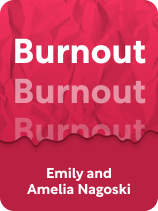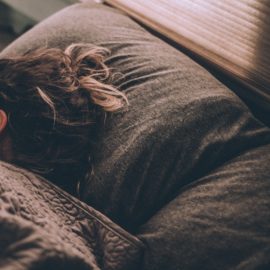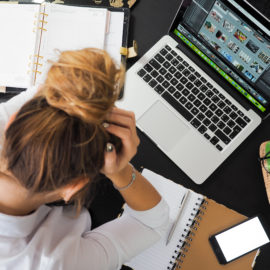

This article is an excerpt from the Shortform book guide to "Burnout" by Emily Nagoski and Amelia Nagoski. Shortform has the world's best summaries and analyses of books you should be reading.
Like this article? Sign up for a free trial here.
How can you prevent burnout before you even feel it? Can burnout happen to anyone?
Burnout can negatively affect your physical, emotional, and mental health. Luckily, Amelia and Emily Nagoski believe that burnout can be prevented if the right measures are taken.
Let’s look at how to prevent burnout, as explained in Amelia and Emily’s book Burnout.
How to Prevent Burnout
The authors explain that to learn how to prevent burnout, we must manage both our stressors and the stress they cause. Stress is the body’s hormonal response to perceived threats, and it helps keep us alive. For example, if you’re swimming and see a shark in the water (a stressor), you’re flooded with stress hormones, swim away fast, and feel relieved once you’ve escaped. However, if the shark disappears and your body doesn’t know whether you’ve escaped the threat, the stress will remain.
As we’ve learned, the stressors women face aren’t usually escapable—they tend to linger in our environment, like the shark. This means women’s stress lingers, builds up, and eventually causes burnout. The authors explain that to avoid this, you must (1) dissipate the lingering stress hormones, and (2) manage and minimize your stressors. This section will provide the authors’ techniques for how you can accomplish these objectives.
(Shortform note: Researchers agree that stress is a biological response to danger, elaborating that our body becomes stressed when something threatens its homeostasis. Homeostasis is a state of equilibrium among independent elements in our body, so we can classify anything that changes our body chemistry as a stressor—for example, things that alter our emotional state, energy level, and so on. Chronic stressors like those women face in the modern world prevent them from reaching homeostatic balance as their body chemistry is frequently disrupted. This can lead to several health problems, including high blood pressure and greater vulnerability to anxiety and depression.)
Step 1: Dissipate Your Stress Hormones
The authors assert that to dissipate the stress hormones we create when faced with a stressor, we must mimic our body’s natural response to stress. They elaborate that our stress response cycle developed to help early humans survive, so to complete the stress cycle, we need to respond as early humans did.
When our ancient ancestors faced threats (stressors), they took action—they ran, hunted, screamed, and gathered together. While the stressors modern humans face aren’t the same, the way our body processes a neutralized threat is. The authors assert that based on these primal responses, there are three main ways we can dissipate our stress and prevent burnout: by exerting energy, connecting with others, and practicing wellness.
Step 2: Manage Your Stressors
The authors explain that stressors are stimuli that indicate danger. For women, stressors tend to be things like patriarchal standards, unrealistic expectations, and self-doubt—things that indicate your potential to fail yourself or others.
They elaborate that there are two main types of stressors: controllable and uncontrollable. Controllable stressors are things like self-doubt or health issues—there are steps you can take to eliminate these types of stressors. Uncontrollable stressors are things like misogyny or external barriers that hinder your ability to meet goals or expectations—no matter what you do, you can’t eliminate them.
The authors recommend a few techniques that will help you overcome both types of stressors and prevent burnout. If the stressor is controllable, you can either make a plan to overcome it or change your expectations and measures of success. If the stressor is uncontrollable, you can either find value in the barriers that are hindering your progress or accept that some goals and expectations are unattainable and move on.

———End of Preview———
Like what you just read? Read the rest of the world's best book summary and analysis of Emily Nagoski and Amelia Nagoski's "Burnout" at Shortform.
Here's what you'll find in our full Burnout summary:
- Why women are more likely to suffer physical, mental, and emotional burnout in today's society
- How women can handle these stressors and thrive
- How to recover from burnout and get back on your feet






